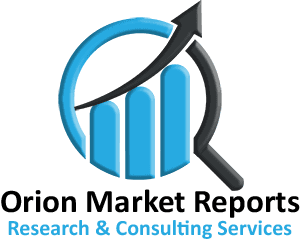Antifibrinolytic Drugs Market Global Trends, Market Share, Industry Size, Growth, Opportunities and Market Forecast – 2022 to 2028
The Global Antifibrinolytic Drugs Market is expected to grow at a CAGR of 5% during the forecast period 2022-2028.
Antifibrinolytic drugs are used to prevent fibrinolysis or dissolution of blood clots or clots. Fibrinolysis is a process in which stimulated plasminogen removes excess fibrin, promoting fibrin clot formation and wound healing. In addition, tissue plasminogen activators and other plasminogen activators are primary mediators of lysis therapy. Fibrinolysis blockers act either by reversely blocking the lysine binding site of plasmin when plasminogen is converted to plasmin, or by inhibiting the activity of plasmin through inhibition of serine proteases. Antifibrinolytic agents are widely used for the inhibition of fibrinolysis and are called lysine analogues. Drugs are used to control massive bleeding and other clotting disorders. In addition, antifibrinolytics are widely used to manage mucosal bleeding with high fibrinolytic potential, such as the oropharyngeal, nasal, gastrointestinal tract, and uterine-vaginal lining. For hemophilia, antifibrinolytic drugs such as tranexamic acid or epsilon aminocaproic acid are commonly used in conjunction with oral bleeding or dental surgery.
Market Segments
By Type
- Amicar
- Aminocaproic Acid
- Aprotinin
- Cyklokapron
- Fibrinogen
- Lysteda
- Riastap
- Tranexamic Acid Injection
- Tranexamic Acid Oral
- Trasylol
By Application
- Hospitals
- Ambulatory Surgical Centers
- Clinics
- Healthcare Specialty Processes
- Others
Key Players
- Akorn Inc.
- Aurobindo Pharma Limited
- Bayer AG
- Ferring Holding SA
- Mylan N.V.
- Novartis International AG (Sandoz)
- Pfizer Inc.
- Sanofi S.A.
- Takeda Pharmaceutical Company Limited
- Vitruvias Therapeutics Inc.
Scope of the Report
The research study analyzes the global Antifibrinolytic Drugs industry from 360-degree analysis of the market thoroughly delivering insights into the market for better business decisions, considering multiple aspects some of which are listed below as:
Recent Developments
o Market Overview and growth analysis
o Import and Export Overview
o Volume Analysis
o Current Market Trends and Future Outlook
o Market Opportunistic and Attractive Investment Segment
Geographic Coverage
o North America Market Size and/or Volume
o Latin America Market Size and/or Volume
o Europe Market Size and/or Volume
o Asia-Pacific Market Size and/or Volume
o Rest of the world Market Size and/or Volume
Key Questions Answered by Antifibrinolytic Drugs Market Report
1. What was the Antifibrinolytic Drugs Market size in 2020 and 2021; what are the estimated growth trends and market forecast (2022-2028).
2. What will be the CAGR of Antifibrinolytic Drugs Market during the forecast period (2022-2028)?
3. Which segments (product type/applications/end-user) were most attractive for investments in 2022? How these segments are expected to grow during the forecast period (2022-2028).
4. Which manufacturer/vendor/players in the Antifibrinolytic Drugs Market was the market leader in 2020?
5. Overview on the existing product portfolio, products in the pipeline, and strategic initiatives taken by key vendors in the market.
The report will be delivered within 48-72 hours after payment confirmation
